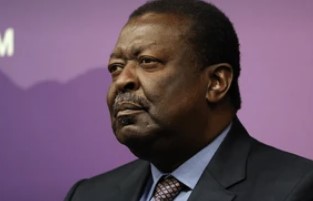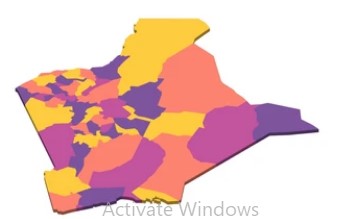Have you ever wondered what it would be like to explore Kenya’s stunning landscapes on foot, breathing in fresh mountain air, and witnessing awe-inspiring views that few others experience? If you haven’t considered it yet, hiking in Kenya is a must this holiday. From lush forests to towering mountains, Kenya offers some of the world’s most scenic hiking trails. Beyond the breathtaking landscapes, there are numerous physical and mental benefits to hiking. Whether you’re a seasoned hiker or just getting started, Kenya’s trails promise unforgettable adventures.
This blog will explain what hiking in Kenya is all about, why it’s considered one of the best body exercises, and provide tips for an enjoyable family hiking trip in Kenya. So, let’s lace up those boots and get ready to discover why hiking in Kenya should be on your holiday list.

What is Hiking? A Brief Overview
Before we delve into hiking in Kenya, let’s first define what hiking is all about. Hiking is the activity of walking through natural environments, often on established trails or paths. It can range from a short, relaxing walk to challenging mountain treks. The key characteristic of hiking is that it’s typically done in nature, offering the opportunity to disconnect from daily stress and engage in physical activity.
Hiking in Kenya ranges from leisurely walks through the savannah to multi-day treks up towering peaks. The varying landscapes, from rocky ridges to dense forests, make it an exciting and diverse way to spend time outdoors. So, whether you’re walking through a forest or scaling a volcano, Kenya offers something for every type of hiker.
Why Hiking is Considered One of the Best Body Exercises
Hiking is widely regarded as one of the best forms of exercise. Here’s why:
- Cardiovascular Health
Hiking improves cardiovascular health by engaging the heart and lungs in steady, consistent activity. Whether you’re hiking up a hill or along a flat trail, it helps lower the risk of heart disease and high blood pressure. - Full-Body Workout
Unlike running or walking on a treadmill, hiking engages a range of muscles. The varied terrain challenges your core, legs, and even your arms (if you use trekking poles), offering a well-rounded workout. - Mental Health Benefits
Physical exercise and exposure to nature are both proven to reduce stress, anxiety, and depression. Hiking provides an excellent opportunity to relax your mind while benefiting your body. - Improves Balance and Coordination
Navigating uneven trails improves your coordination and balance. It strengthens your muscles and helps prevent falls, making it especially beneficial as you age. - Weight Management
Hiking is an excellent way to burn calories and shed excess weight, especially when combined with healthy eating. It’s a low-impact activity, so it’s easy on the joints while still being highly effective for weight loss.
Benefits of Picking Hiking as a Leisure Activity
While hiking is an excellent physical exercise, it also makes for a fantastic leisure activity. Here’s why:
- Connection to Nature
Hiking allows you to experience the outdoors in a personal and intimate way. Whether it’s walking through forests, climbing hills, or strolling along lakes, hiking in Kenya gives you a deep connection to the natural world. - Affordable and Accessible
Hiking requires minimal equipment—just a good pair of shoes and a few essentials. It’s an affordable way to enjoy nature and spend time with family or friends. Whether you’re hiking alone or with loved ones, it’s easy to enjoy and budget-friendly. - Stress Relief
Spending time outdoors in nature has been proven to reduce stress and improve mental well-being. Hiking is a great way to disconnect from daily pressures and enjoy the present moment. - Adventure and Exploration
Hiking in Kenya offers opportunities to explore remote areas and hidden gems, such as secluded waterfalls or scenic ridges that are inaccessible by vehicle. - Quality Time with Loved Ones
For families, hiking offers a great way to bond while enjoying nature. Whether it’s hiking along Kenya’s national parks or through local nature reserves, it’s a fun way to create lasting memories.

Essential Hiking Tools for Hiking in Kenya
When planning your hiking in Kenya adventure, it’s crucial to have the right gear. Here are some essentials you should bring along:
- Proper Footwear
Kenya’s terrain can be challenging, so it’s essential to wear sturdy hiking boots or shoes. Look for shoes with a solid grip and waterproof features to handle different surfaces like rocky paths or muddy trails. - Backpack
A lightweight but durable backpack is necessary to carry your essentials such as water, snacks, and extra clothing. Ensure it’s comfortable and fits well. - Water and Snacks
Staying hydrated is key to a successful hike. Always bring enough water and high-energy snacks like fruits, nuts, and protein bars to keep your energy levels up. - Layered Clothing
The weather in Kenya can change quickly, especially in higher altitudes. Bring moisture-wicking clothes for hot weather and a jacket or sweater for cooler conditions. Don’t forget a hat to protect against the sun. - Trekking Poles
For those hiking on steep or uneven ground, trekking poles can provide extra support and help reduce the strain on your knees. - First Aid Kit
Accidents can happen, so it’s essential to carry a basic first aid kit, including bandages, antiseptic, pain relievers, and any personal medications. - Sunscreen
Protect your skin from Kenya’s strong sun by applying sunscreen regularly. A wide-brimmed hat is also a good idea to shield your face and neck. - Headlamp or Flashlight
If you plan to hike early in the morning or late in the evening, a headlamp or flashlight will be essential for visibility.
Best Hiking Trails in Kenya in 2024: Top 10 Trails
Kenya is home to some of the most spectacular hiking trails in the world. Here are the top 10 hiking trails in Kenya for 2024, starting with the easiest and family-friendly trails and progressing towards the more challenging ones suited for professional climbers:
Best Hiking Trails in Kenya in 2024: Top 10 Trails (Easiest to Hardest)
- Nairobi Arboretum Loop
- Pro: Easily accessible and short, Con: Too short for serious hikers
A short, flat trail perfect for beginners or those with limited time. Ideal for families.
- Pro: Easily accessible and short, Con: Too short for serious hikers
- Karura Forest
- Pro: Family-friendly, Con: Crowded on weekends
Family-friendly with waterfalls, lakes, and scenic views. Easy trails for all ages.
- Pro: Family-friendly, Con: Crowded on weekends
- Loop Trail, Nairobi Arboretum
- Pro: Short and convenient, Con: Limited variety
The loop trail here is ideal for beginners or those looking for a leisurely stroll through nature.
- Pro: Short and convenient, Con: Limited variety
- Maasai Mara National Reserve (Walking Safari)
- Pro: Unique wildlife encounters, Con: Limited hiking routes
Unique wildlife experiences with Maasai guides, offering an easy hike through beautiful terrain.
- Pro: Unique wildlife encounters, Con: Limited hiking routes
- Menengai Crater
- Pro: Expansive views, Con: Challenging terrain
Menengai Crater is a unique hike inside the world’s largest surviving volcanic crater. A moderately challenging hike with spectacular views of the Rift Valley from the crater rim.
- Pro: Expansive views, Con: Challenging terrain
- Hell’s Gate National Park
- Pro: Excellent for rock climbers, Con: Can get crowded
Hell’s Gate offers dramatic scenery, including the Fischer’s Tower rock formation. The trail along Ol Njorowa Gorge lets hikers experience the park’s unique volcanic landscape, with opportunities for abseiling as well. It’s suitable for both beginners and experienced hikers.
- Pro: Excellent for rock climbers, Con: Can get crowded
- Karimwazzi Hill
- Pro: Scenic views, Con: Steep ascents
A moderately steep hike offering scenic views of the Central Kenya Highlands.
- Pro: Scenic views, Con: Steep ascents
- Mt Longonot
- Pro: Great day hike from Nairobi, Con: Steep ascent
A challenging day hike up a dormant volcano with stunning views over the Rift Valley.
- Pro: Great day hike from Nairobi, Con: Steep ascent
- Mt Elgon
- Pro: Tranquil and scenic views, Con: Misty and unpredictable weather
Situated on the border between Kenya and Uganda, Mt Elgon is an extinct volcano with breathtaking views. A 56 km, 4-day hike on an extinct volcano with misty, tranquil scenery. A moderate challenge.
- Pro: Tranquil and scenic views, Con: Misty and unpredictable weather
- Mount Kenya
- Pro: Stunning views, Con: Challenging for beginners
As the highest peak in Kenya, Mount Kenya is a challenging trek, suitable for experienced hikers. The toughest hike, requiring experience, offering stunning views from Kenya’s highest peak.
- Pro: Stunning views, Con: Challenging for beginners

Tips for Hiking with the Entire Family in Kenya
If you’re planning to go hiking with your family in Kenya, here are some tips to ensure everyone has a safe and enjoyable time:
- Choose Easy Trails
For families with young children, choose trails like Karura Forest or the Nairobi Arboretum, which offer easy, flat paths and plenty of attractions along the way. - Bring Snacks and Water
Pack enough water and energy-boosting snacks to keep everyone hydrated and fueled for the hike. - Pace Yourself
Hike at a pace that’s comfortable for all family members. Don’t rush the journey—take breaks and enjoy the surroundings. - Safety First
Always stay on marked trails, and ensure younger children are supervised. It’s important to follow the rules, especially when hiking in national parks. - Wear Comfortable Clothing
Dress in comfortable layers, especially if the weather is unpredictable. Good shoes are a must for everyone, and a hat or sunscreen can help protect from the sun.
Conclusion
With its varied terrain, incredible landscapes, and abundant wildlife, hiking in Kenya offers something for everyone. Whether you’re climbing to the summit of Mount Kenya, enjoying a family walk in Karura Forest, or exploring the volcanic landscape of Hell’s Gate, Kenya’s hiking trails provide adventure, physical exercise, and a deeper connection to nature. It’s time to pack your bags, tie your laces and experience the great outdoors like never before this holiday in Kenya!








